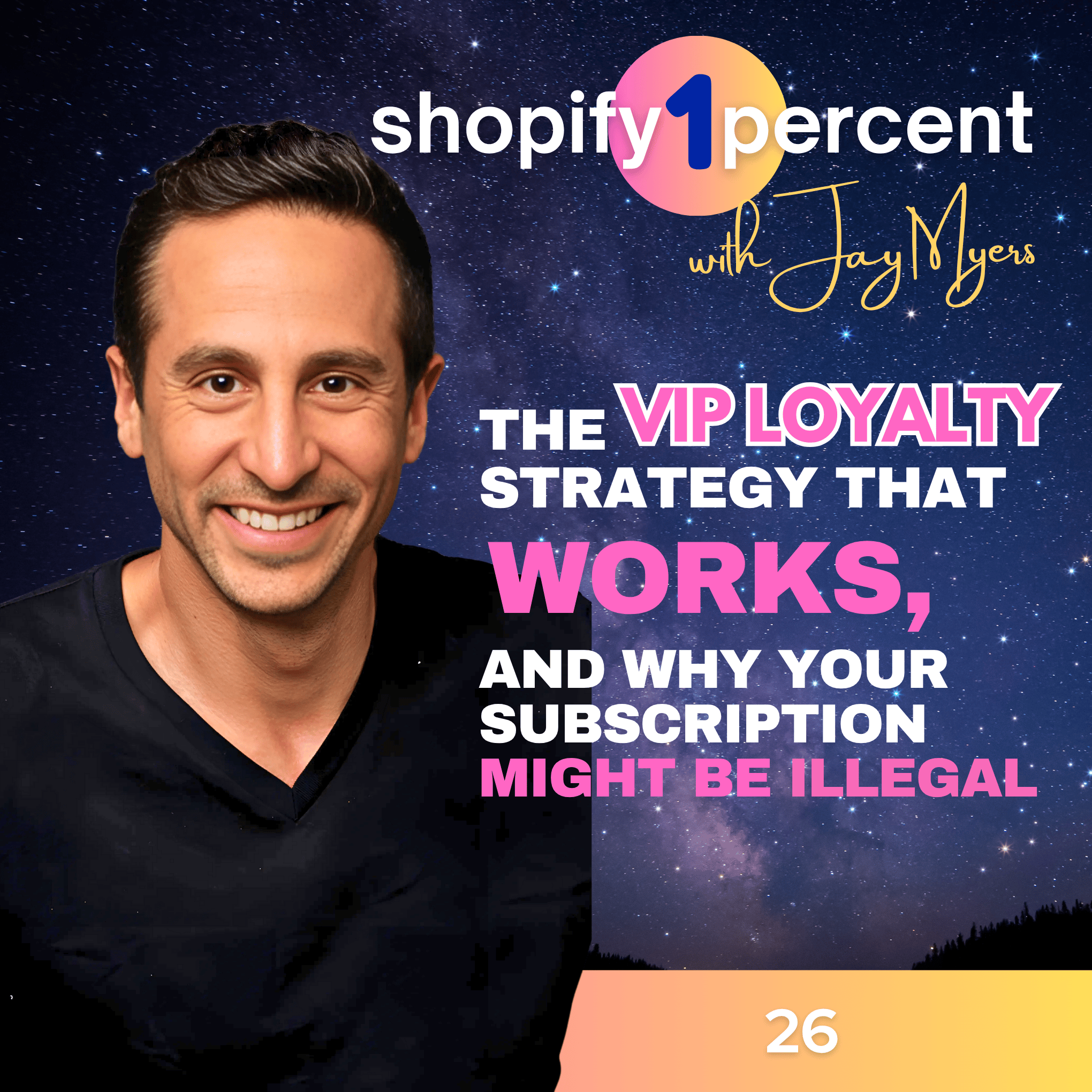What’s Actually Working for Shopify Subscriptions in 2025

Let’s talk subscriptions. Not the dusty old magazine kind. I’m talking about the billion-dollar engine that’s transforming how Shopify businesses drive recurring revenue, build loyalty, and scale smarter. If you’ve got a Shopify store and you're either running a subscription program or thinking about launching one, this blog post is your new best friend.
I recently sat down with Adam Levinter, author of The Subscription Boom, founder of Scriberbase, and winner of the 2025 Subscription Impact Award at SubSummit. Adam is one of the sharpest minds in the subscription game and someone I’ve admired for years. We went deep on what’s changing, what’s working, and what Shopify brands need to be doing right now to stay ahead.
Here’s what I learned (and what you need to know).
The Subscription Economy Isn’t Slowing Down
First, let’s talk numbers. According to UBS, the global subscription economy is expected to reach 1.5 trillion dollars by 2025. That’s trillion with a T. Right now, it’s sitting around 550 billion dollars. So we’re not dealing with a trend. We’re dealing with a tidal wave of opportunity, and Shopify brands are right in the middle of it.
But here’s the catch: growth doesn’t always mean success. Subscriptions are evolving, and if you’re running the same “subscribe and save 10 percent” playbook from 2019, you’re probably leaving a lot of money on the table. Or worse, setting yourself up for churn.
The FTC Is Watching You. Yes, You.
One of the most urgent takeaways from my chat with Adam was about the FTC’s Click-to-Cancel ruling. As of late 2024, subscription businesses are legally required to make it as easy to cancel as it was to sign up.
So if your cancellation flow includes a scavenger hunt, seven popups, or a phone call to customer support on a weekday afternoon, congrats. You might be breaking the law.
Shopify merchants, this applies to you too. Even if you’re under 1 million dollars in revenue, you're not immune. The FTC wants clarity, fairness, and transparency. If you’re hiding cancel buttons with CSS or burying your terms in fine print, it’s time to clean house.
Pro tip: Monitor your refund requests, chargeback rates, and BBB complaints. If any of those are creeping up, your cancellation flow might be the problem.
Paid Memberships Are the New Secret Weapon
Forget points-based loyalty programs. Let’s be honest, most of those are about as exciting as a punch card from a 1998 sandwich shop. Adam introduced a more powerful idea: fee-for-VIP memberships.
Think Amazon Prime, but for your Shopify brand. You charge customers a recurring fee in exchange for access to discounts, early access, VIP products, exclusive content, or even just the feeling of being an “insider.”
Why does this work? Because of something called skin in the game. When customers pay to be part of something, they’re more likely to engage, stick around, and spend more. Plus, recurring membership revenue is predictable and improves your store’s valuation if you ever want to sell.
According to a McKinsey report, members of paid loyalty programs are 60 percent more likely to spend more on a brand compared to those in free programs.
This model is still massively underused in the Shopify world. If you can figure out a way to package your value into a VIP experience, you’re going to win big.
Subscription Retention Starts Before the First Charge
Most Shopify merchants obsess over acquisition and completely forget about what happens after the customer hits “Subscribe.”
This is a huge mistake.
Adam shared something that really stuck with me: churn risk is highest in the first 30 to 90 days of a subscription. That’s when excitement is high but confidence is low. Customers don’t know what to expect, they haven’t seen value yet, and they’re one weird delivery or underwhelming unboxing away from canceling.
The best subscription brands treat that early window like onboarding a new relationship, not just shipping a product.
Here are some actionable tips we discussed:
- Send a thank-you video or personalized message immediately after signup
- Educate your subscribers on how to get the most out of your product
- Drip emails with behind-the-scenes content, founder stories, and “pro tips”
- Make it shareable, and give customers a reason to talk about your subscription at the water cooler
And yes, message them often. If you’re afraid to email your subscribers because you think they’ll cancel, then your value proposition isn’t strong enough. Period.
Different Types of Churn Require Different Solutions
There are two types of churn:
- Voluntary churn – when a customer actively cancels
- Involuntary churn – failed payments or expired cards
Shopify brands need to treat these differently.
For voluntary churn, focus on improving the customer experience. Add more value, communicate better, and fix pain points. For involuntary churn, get technical. Use tools that automatically update payment methods, retry billing, and notify customers before cards expire.
Apps like Recharge, Skio, or Bold Subscriptions can help automate a lot of this, but you still need to monitor and optimize.
Everyone Wants to Be an Influencer. Even Your Customers.
One of my favorite moments from this conversation was when Adam said, “Everyone wants to be an influencer, even if they’re not one.”
He’s right.
People want to share cool things. If your Shopify subscription makes someone feel smart, special, or ahead of the curve, they’ll talk about it. But if it’s just another box with stuff in it, they’ll ghost you faster than a bad Tinder date.
So give them something to share. Build exclusivity. Make your product an experience, not a commodity.
Bonus Tip: Don’t Ignore Amazon
Shopify purists, brace yourselves. Adam also runs Axis Brands, an agency that helps Shopify merchants expand into Amazon. And no, it’s not selling out.
Amazon has lower CAC, massive reach, and it’s not the enemy. In fact, smart brands are using Amazon as a growth channel while still owning the relationship on Shopify.
Adam and his team offer a free Amazon audit and profitability forecast to Shopify brands considering expansion. You’d be surprised how often that becomes the key to scaling faster.
Final Thoughts
Subscriptions are not dead. They’re just evolving. The Shopify brands that treat subscriptions like relationships, not transactions, are the ones winning in 2025.
So if you’re still running your subscription business like it’s 2018, it’s time to level up.
Clean up your cancel flow. Launch a VIP membership. Obsess over onboarding. Automate payment recovery. And give your subscribers something worth talking about.











